The Situationist International (SI) was an international organization of social revolutionaries made up of avant-garde artists, intellectuals, and political theorists. It was prominent in Europe from its formation in 1957 to its dissolution in 1972. The intellectual foundations of the Situationist International were derived primarily from libertarian Marxism and the avant-garde art movements of the early 20th century, particularly Dada and Surrealism. Overall, situationist theory represented an attempt to synthesize this diverse field of theoretical disciplines into a modern and comprehensive critique of mid-20th century advanced capitalism.

The avant-garde is a person or work that is experimental, radical, or unorthodox with respect to art, culture, or society. It is frequently characterized by aesthetic innovation and initial unacceptability.
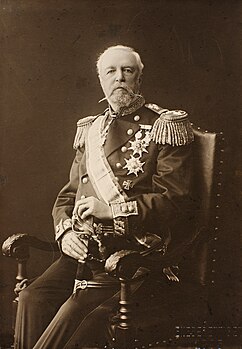
Oscar II was King of Sweden from 1872 until his death in 1907 and King of Norway from 1872 to 1905.
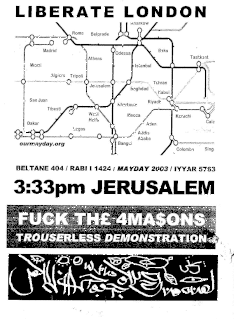
Psychogeography is the exploration of urban environments that emphasizes interpersonal connections to places and arbitrary routes, and follows a loosely defined urban practice known as the dérive. It was developed by members of the Letterist International and Situationist International, which were revolutionary groups influenced by Marxist and anarchist theory as well as the attitudes and methods of Dadaists and Surrealists. In 1955, Guy Debord defined psychogeography as "the study of the precise laws and specific effects of the geographical environment, consciously organized or not, on the emotions and behavior of individuals." As a practice and theory, psychogeography has influenced a broad set of cultural actors, including artists, activists and academics.
Lettrism is a French avant-garde movement, established in Paris in the mid-1940s by Romanian immigrant Isidore Isou. In a body of work totaling hundreds of volumes, Isou and the Lettrists have applied their theories to all areas of art and culture, most notably in poetry, film, painting and political theory. The movement has its theoretical roots in Dada and Surrealism. Isou viewed his fellow countryman Tristan Tzara as the greatest creator and rightful leader of the Dada movement, and dismissed most of the others as plagiarists and falsifiers. Among the Surrealists, André Breton was a significant influence, but Isou was dissatisfied by what he saw as the stagnation and theoretical bankruptcy of the movement as it stood in the 1940s.

Asger Oluf Jorn was a Danish painter, sculptor, ceramic artist, and author. He was a founding member of the avant-garde movement COBRA and the Situationist International. He was born in Vejrum, in the northwest corner of Jutland, Denmark, and baptized Asger Oluf Jørgensen.
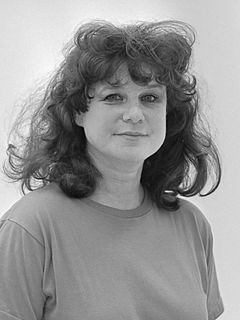
Jacqueline de Jong is a Dutch painter, sculptor and graphic artist. She was born in the Dutch town of Hengelo to Jewish parents. Faced with the German invasion, they went into hiding. After an abortive escape attempt to England, her father Hans remained in Amsterdam while her mother and she made for Switzerland, accompanied by the Dutch painter Max van Dam. At the border they were captured by the French police, but just as they were about to be deported to the Drancy internment camp, they were rescued by the resistance, who helped them over the border. When they returned to the Netherlands following the war, Jacqueline could not speak Dutch. From 1947 on she went to school in Hengelo and Enschede.
King Mob was an English radical group based in London during the late 1960s/early 1970s.
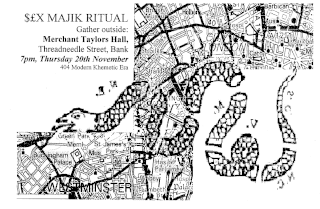
The dérive is a revolutionary strategy originally put forward in the "Theory of the Dérive" (1956) by Guy Debord, a member at the time of the Letterist International. Debord defines the dérive as "a mode of experimental behaviour linked to the conditions of urban society: a technique of rapid passage through varied ambiances." It is an unplanned journey through a landscape, usually urban, in which participants drop their everyday relations and "let themselves be drawn by the attractions of the terrain and the encounters they find there". Though solo dérives are possible, Debord indicates
that the most fruitful numerical arrangement consists of several small groups of two or three people who have reached the same level of awareness, since cross-checking these different groups' impressions makes it possible to arrive at more objective conclusions.
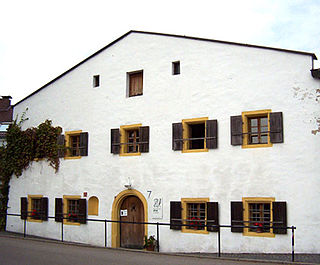
Gruppe SPUR was an artistic collaboration formed by the German painters Heimrad Prem, Helmut Sturm and Hans-Peter Zimmer and the sculptor Lothar Fischer in 1957. They published a journal of the same name Spur.

Anti-art is a loosely used term applied to an array of concepts and attitudes that reject prior definitions of art and question art in general. Somewhat paradoxically, anti-art tends to conduct this questioning and rejection from the vantage point of art. The term is associated with the Dada movement and is generally accepted as attributable to Marcel Duchamp pre-World War I around 1914, when he began to use found objects as art. It was used to describe revolutionary forms of art. The term was used later by the Conceptual artists of the 1960s to describe the work of those who claimed to have retired altogether from the practice of art, from the production of works which could be sold.
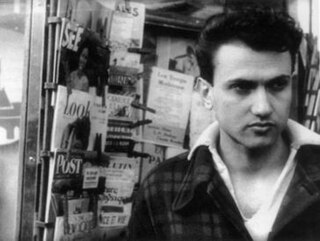
Isidore Isou, born Isidor Goldstein, was a Romanian-born French poet, dramaturge, novelist, film director, economist, and visual artist who lived in the 20th century. He was the founder of Lettrism, an art and literary movement which owed inspiration to Dada and Surrealism.

Russian Futurism is the broad term for a movement of Russian poets and artists who adopted the principles of Filippo Marinetti's "Manifesto of Futurism," which espoused the rejection of the past, and a celebration of speed, machinery, violence, youth, industry, destruction of academies, museums, and urbanism; it also advocated the modernization and cultural rejuvenation.
Michèle Bernstein is a French novelist and critic, most often remembered as a member of the Situationist International from its foundation in 1957 until 1967, and as the first wife of its most prominent member, Guy Debord.
In the sociological sense, recuperation is the process by which politically radical ideas and images are twisted, co-opted, absorbed, defused, incorporated, annexed or commodified within media culture and bourgeois society, and thus become interpreted through a neutralized, innocuous or more socially conventional perspective. More broadly, it may refer to the cultural appropriation of any subversive symbols or ideas by mainstream culture.

On the Poverty of Student Life: A Consideration of Its Economic, Political, Sexual, Psychological and Notably Intellectual Aspects and of a Few Ways to Cure it is a pamphlet first published by students of the University of Strasbourg and the Situationist International (SI) in 1966. Attacking the subservience of university students and the strategies of student radicals, it caused significant uproar, led to the dissemination of Situationist ideas, and precipitated the events of May 1968 in France.
Report on the Construction of Situations is the founding Manifesto of the Situationist International revolutionary organization. The pamphlet was published by Guy Debord in June 1957, and the following month the organization was founded, at Cosio d'Arroscia, Italy.

Johan Axel Gustaf Törneman was one of Sweden's earliest modernist painters. Born in Persberg, Värmland, in Sweden, he grew to work in several modernist styles, was one of the first Swedish expressionist artists, and became a part of the international avant-garde in art after embracing more abstract art styles in Germany and France that were evolving there during the early 1900s. He created his most famous paintings, Night Café I and II, and Trait, in France in 1905. These night café paintings, made from studies in the Place Pigalle, and in other nightclubs popular with artists such as Café du Rat Mort, are seen as two of Swedish modernism's most important works, and are considered breakthrough work of Swedish modernism.

Otto Gustaf Carlsund was a Swedish avant-garde artist and art critic, connected to Cubism, Purism, Neo-Plasticism, and Concrete art.
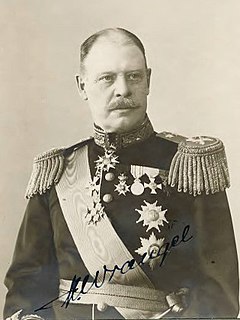
Lieutenant General Herman Georg Waldemar Wrangel was a senior officer in the Swedish Coastal Artillery. He served as commanding officer of the Swedish Coastal Artillery for 15 years (1909–1924). Wrangel served as secretary, member and chairman of a number of committees and commissions. Wrangel was also a member of the Upper House of the Riksdag and a member of the Committee on Defence as well as of the Committee of Supply.













